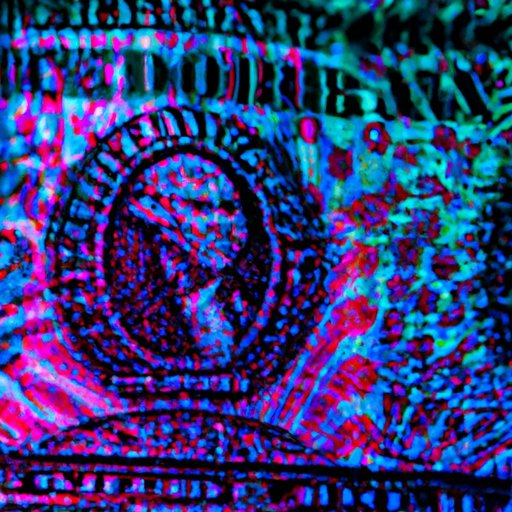
Introduction
Money is a crucial part of our daily lives, and we rely on it to not only purchase goods and services but also to save and plan for our future. However, one of the biggest threats facing money today is counterfeit currency. Counterfeit currency is fake money that looks real and can be difficult to identify without proper knowledge. The ability to distinguish between real and counterfeit money is of utmost importance to prevent financial losses, fraud, and potential legal consequences. In this guide, we will explore the different ways to tell if money is real and spot counterfeit money.
Basic Security Features
One of the most basic ways to identify real money is to look for security features. Real currency has specific security measures to prevent counterfeiting, which counterfeiters have a difficult time reproducing. Some of the basic security features that can be found in genuine money include:
- Watermarks and Holographic Features
- Security Threads
- Color-Shifting Ink
- Raised Printing or Textures
- Microprinting
Counterfeit money, on the other hand, often lacks many of these security features or attempts to replicate them but falls short in quality.
Here are some examples of counterfeit money:

The Feel of Authentic Money
Another way to identify real money is by its texture. Genuine currency is made with specific materials that give it a unique feel. The paper used in real currency is composed of a blend of cotton and linen fibers, creating a texture that feels crisp and firm. Additionally, real currency is highly durable and can withstand wear and tear.
Counterfeit bills, however, are often printed on lower-quality paper, which feels notably different from authentic currency. These bills may feel softer, flimsier, or smoother to the touch.
Here are some examples of fake money textures:

Unique Security Features for Different Currencies
In addition to basic security features, every currency has unique security features that are specific to that currency. Here are some examples of different security features for popular currencies:
- USD: Security Ribbon, Bell in the Inkwell, Microprinting, Color-Shifting Ink
- Euro: Watermark Portrait, Security Thread, Raised Printing, Microprinting, Holograms
- Yen: Watermark, Intaglio Printing, Color-Shifting Ink, Security Thread
It is important to familiarize yourself with the unique security features of the currencies you handle frequently. You can use these features to identify fake currency and feel confident in your ability to spot counterfeit bills.
Here are some examples of unique security features for different currencies:

Watermarks and Holographic Patterns
Watermarks and holographic patterns are security features that are unique to genuine currency. Watermarks are thin images embedded in the paper of the bill and can be seen when held up to the light. Holograms reflect light in a specific way and can be seen only at certain angles.
To identify these features, hold the note up to a light source and look for the watermark image. Some genuine bills have watermarks of the person featured on the bill, while others feature a specific design. Holograms may also be present on the note and will reflect light in a specific way when viewed at the correct angle.
Here are some examples of different watermarks and holographic patterns:

The Use of Black Light
Black lights are frequently used to expose unique security features like UV-reactive inks, invisible thread, or reflective threads. The UV light causes these features to glow in a distinct way, which makes them clear to see.
To find hidden security features in the banknote, shine a black light on it. This will reveal any hidden markings, UV features, or other security features that are not visible to the naked eye.
Here are some examples of hidden features that can be identified using a black light:

Common Counterfeiting Mistakes
Even the most sophisticated counterfeiters can sometimes make mistakes when producing fake bills. Here are some of the most common mistakes to look for in fake money:
- blurred or fuzzy text
- poor-quality printing
- inaccurate colors or images
- thin paper
- lack of serial numbers and identifiable features
If you notice any of these mistakes, it could be an indication that the bill is fake.
Here are some examples of common counterfeiting mistakes:

Reporting Counterfeit Money
If you come across counterfeit money, it is important to report it to the authorities immediately. Continuing to use or distribute counterfeit money can result in severe legal consequences. If you receive counterfeit currency, do not return the bill to the passer. Instead, try to remember the passer’s description and contact the authorities.
To report counterfeit currency, simply contact your local police or the United States Secret Service.
Conclusion
In conclusion, identifying genuine money is crucial to prevent financial losses and protect yourself from potential legal consequences. By familiarizing yourself with the basic and unique security features of different currencies, checking the feel of the money, using a black light, identifying common counterfeiting mistakes, and reporting counterfeit money to the authorities, you can feel confident in your ability to distinguish between real and counterfeit currency. Stay vigilant and protect yourself from fraud.





